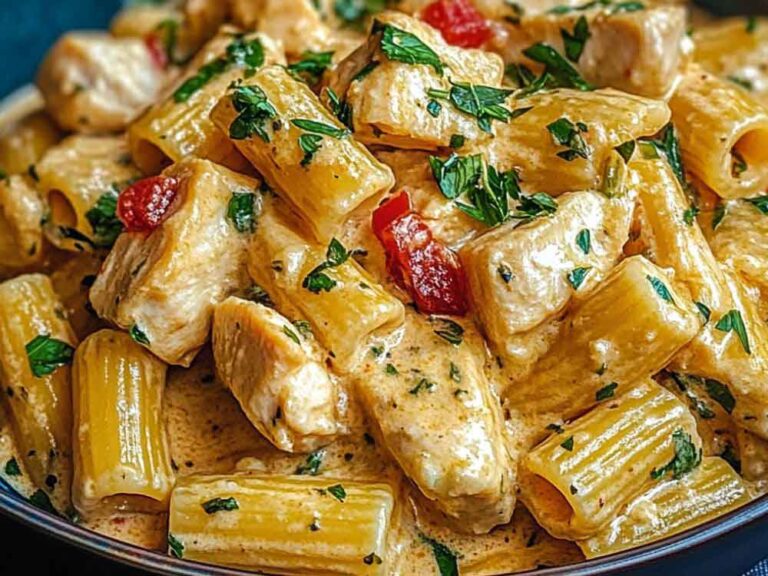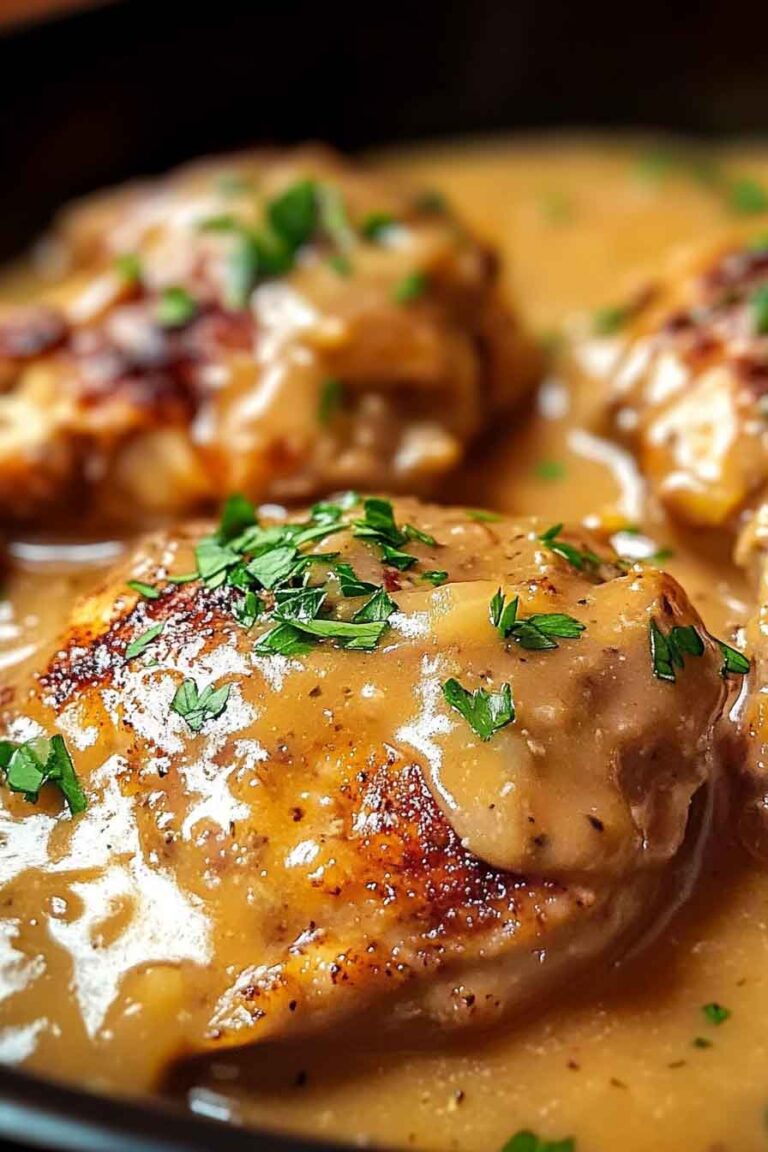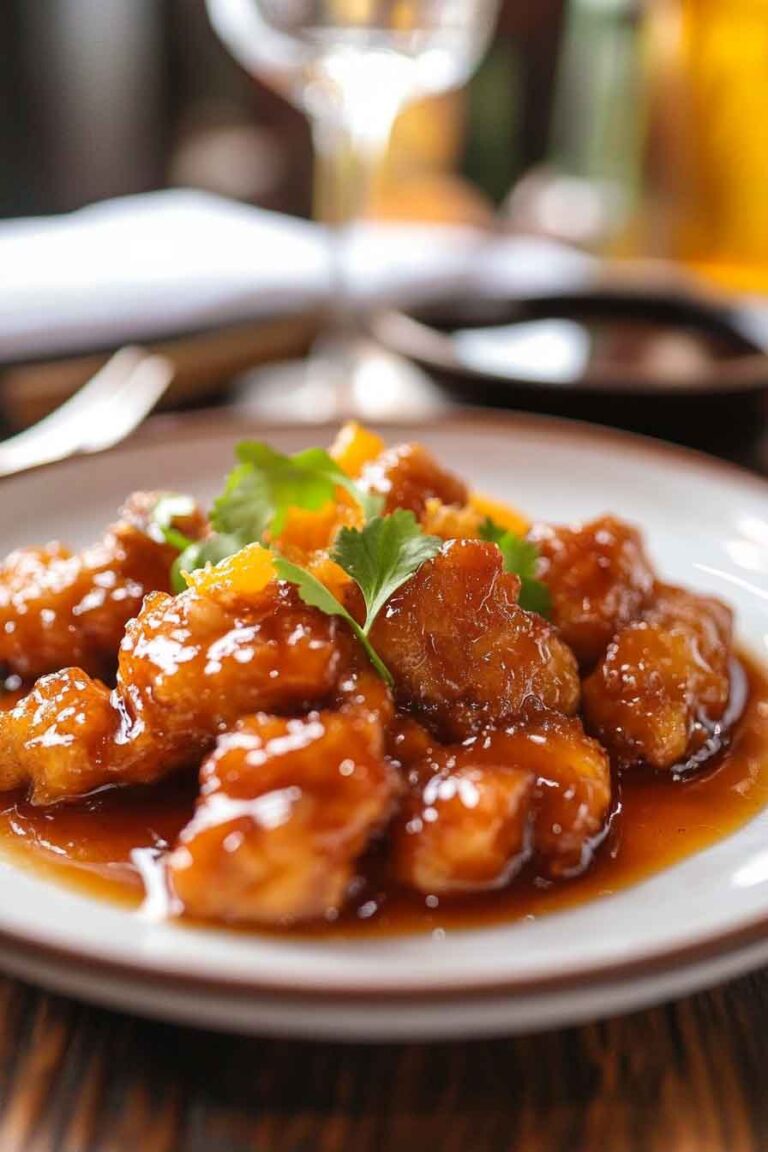Spicy Korean Chicken (Crispy & Flavorful)
Are you ready to ignite your taste buds with a bold and fiery kick? Spicy Korean Chicken is the ultimate blend of heat, sweetness, and umami that’s bound to become your new favorite. Perfectly crispy on the outside and tender on the inside, this dish is a showstopper for spice lovers.
What makes this dish so irresistible? It’s all about the rich gochujang-based sauce, paired with fragrant garlic, zesty ginger, and a touch of sweetness to balance the heat. Whether you’re hosting a dinner or craving something deliciously different, this recipe has you covered.
Imagine crispy chicken bites coated in a luscious, spicy-sweet glaze that melts in your mouth. Paired with steamed rice or fresh veggies, it’s a flavor explosion you won’t forget. Plus, it’s easy to make at home—no special skills required!
Ready to spice up your dinner menu? Let’s dive into the step-by-step recipe and whip up this irresistible Spicy Korean Chicken in no time. Your taste buds are in for a treat!
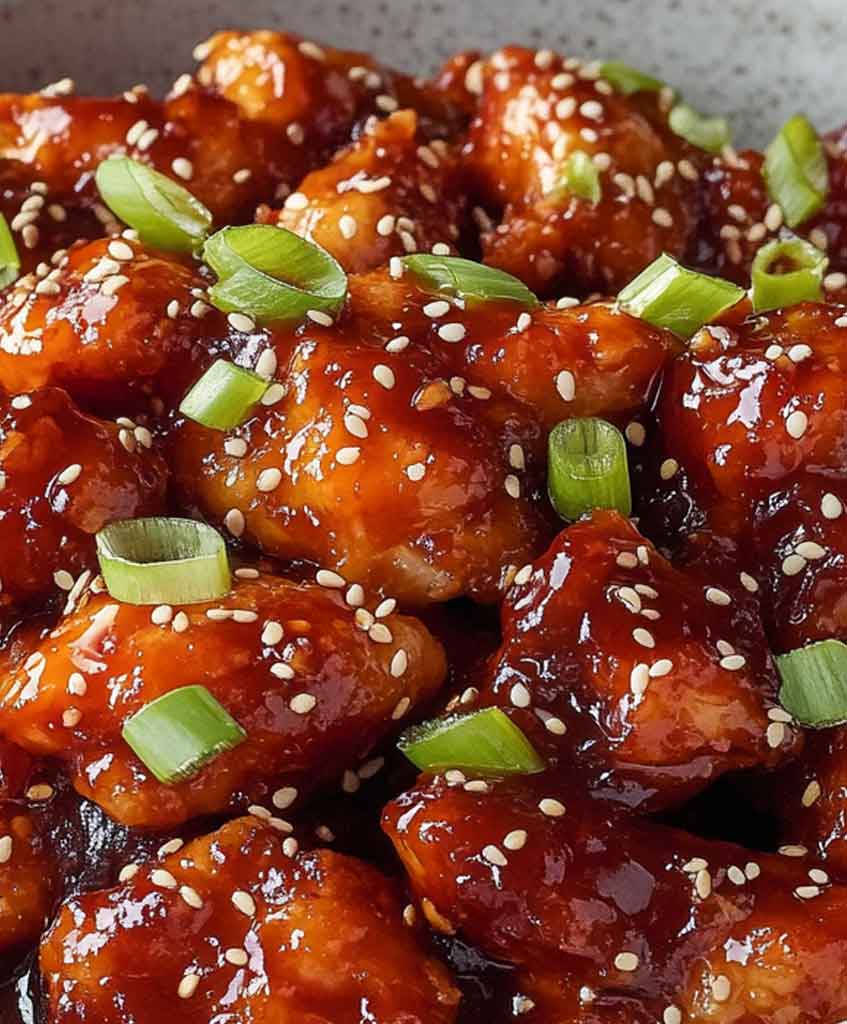
Why You’ll Love This Recipe
- Irresistible Flavors: A balanced blend of spicy, sweet, and savory that will leave you craving more.
- Crispy Perfection: The chicken is fried to a perfect crunch, giving it an unbeatable texture.
- Easy to Make: With a little prep and simple steps, you can create restaurant-quality Korean fried chicken at home.
- Versatile Dish: Perfect as a main course, appetizer, or even party food.
- Meal Prep Friendly: The sauce and crispy chicken can be prepped in advance for convenience.
Required Kitchen Tools
To make this recipe, you’ll need:
- Mixing bowls
- Tongs
- Deep frying pan or heavy-bottomed pot
- Meat thermometer
- Saucepan
- Whisk
- Paper towels for draining
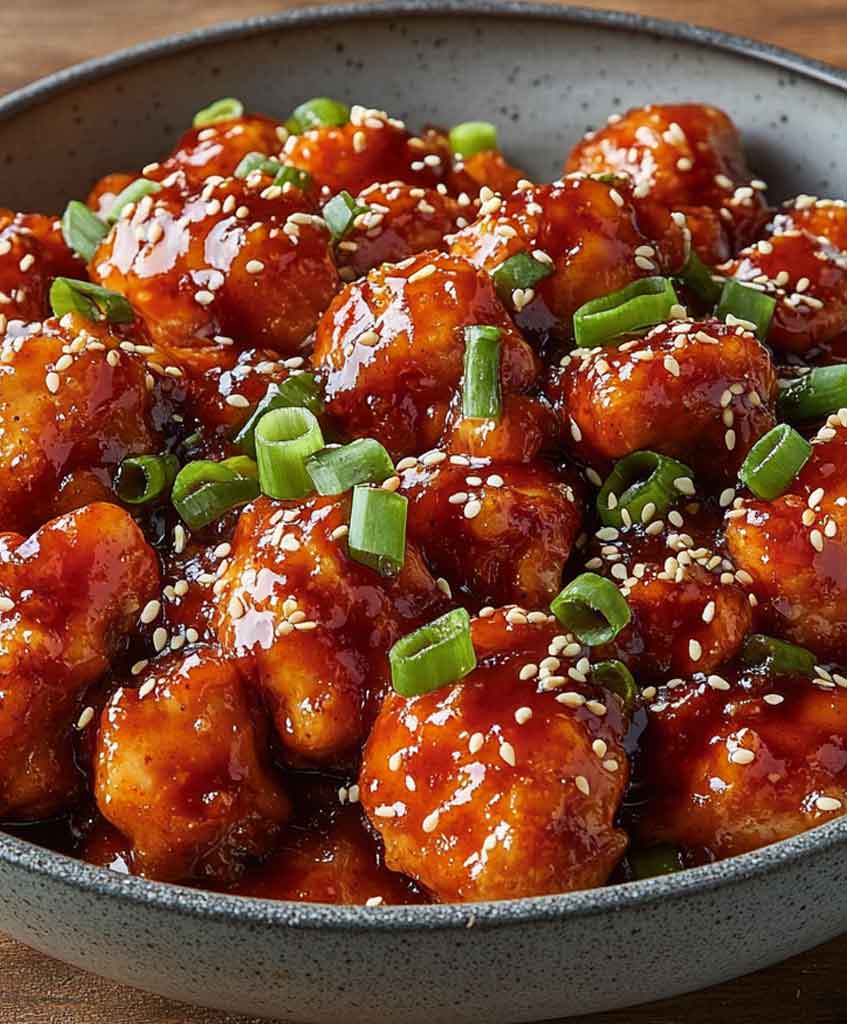
Ingredients
For the Chicken and Marinade:
- 4 chicken breasts: Sliced into long, thick strips
- 240 ml (1 cup) buttermilk: To tenderize the chicken
- ½ tsp salt: For seasoning
- ¼ tsp white pepper: Adds subtle heat
- ¼ tsp garlic salt: Enhances flavor
For the Crispy Coating:
- 180 g (1 ½ cups) plain flour: The base for the crispy coating
- 1 tsp salt: For seasoning
- 1 tsp ground black pepper: For a mild kick
- ½ tsp garlic salt: Layers more flavor
- ½ tsp celery salt: Adds a unique savory note
- 1 tsp dried thyme: A touch of herbaceousness
- 1 tsp paprika: For color and depth
- 1 tsp baking powder: Ensures a light, crispy texture
- 1 tsp chili flakes: For an extra heat boost
- Vegetable oil: For frying (at least 1 liter/4 cups)
For the Sauce:
- 2 tbsp gochujang paste: The star of the sauce, providing spice and umami
- 2 tbsp honey: Balances the heat with sweetness
- 4 tbsp brown sugar: Deepens the sweetness
- 4 tbsp soy sauce: Adds a salty, savory element
- 2 cloves garlic, minced: For bold, aromatic flavor
- 2 tsp minced ginger: Adds warmth and depth
- 1 tbsp vegetable oil: For cooking the sauce
- 1 tbsp sesame oil: Infuses the sauce with nutty richness
- 3 spring onions, sliced: For garnish and crunch
- 1 tsp sesame seeds: Adds texture and nuttiness
- ½ tsp chili flakes: Optional, for garnish
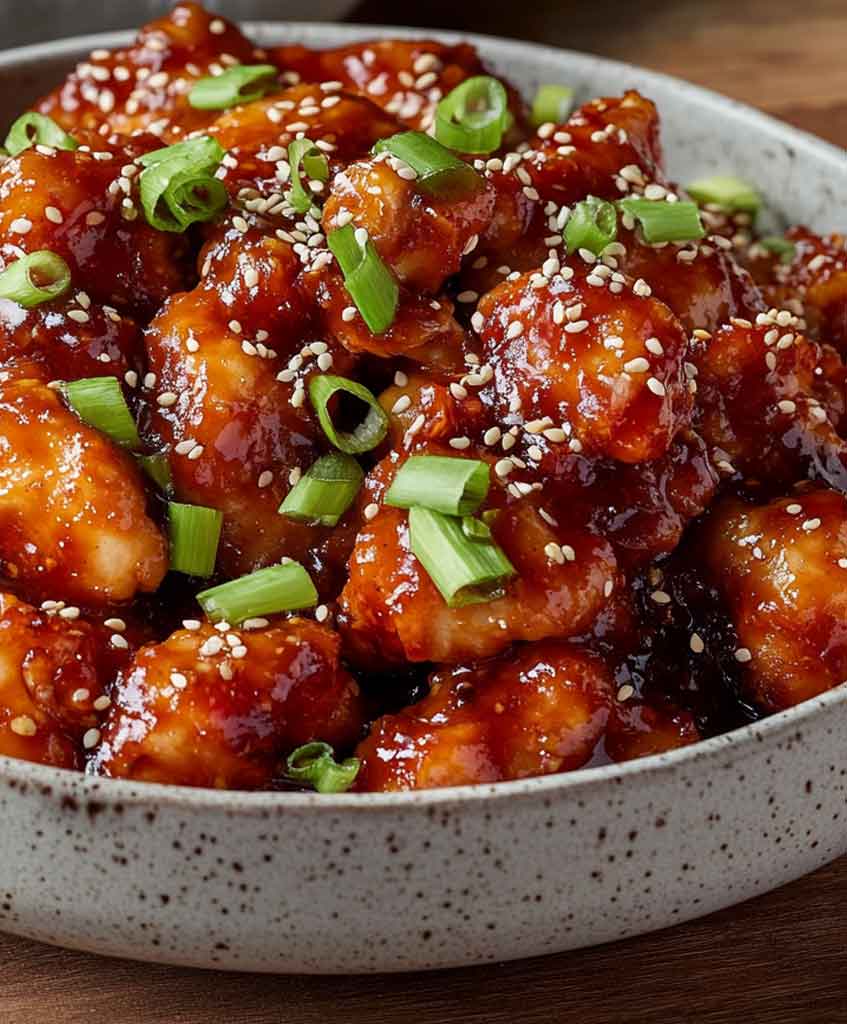
Step-by-Step Instructions
1. Marinate the Chicken
Start by placing the chicken strips in a large bowl. Add the buttermilk, salt, white pepper, and garlic salt. Mix well to ensure every piece is coated. Cover and refrigerate for at least 30 minutes, or up to 4 hours for maximum tenderness.
2. Prepare the Crispy Coating
In a separate bowl, combine the flour, salt, black pepper, garlic salt, celery salt, thyme, paprika, baking powder, and chili flakes. Whisk everything together to create a well-blended coating mixture.
3. Coat the Chicken
Remove the marinated chicken from the fridge. Shake off any excess buttermilk, then dredge each strip in the flour mixture. Press gently to ensure the coating sticks well. Place the coated chicken on a plate and let it rest for 10 minutes. This helps the coating adhere better during frying.
4. Fry the Chicken
Heat vegetable oil in a deep frying pan or pot to 175°C (350°F). Carefully lower the chicken strips into the hot oil in batches, ensuring not to overcrowd the pan. Fry for 5-7 minutes or until golden brown and cooked through. Use a meat thermometer to check that the internal temperature reaches 75°C (165°F). Transfer the fried chicken to a plate lined with paper towels to drain excess oil.
5. Make the Sauce
In a saucepan, heat vegetable oil over medium heat. Add the minced garlic and ginger, sautéing until fragrant. Stir in the gochujang paste, honey, brown sugar, soy sauce, and sesame oil. Cook for 2-3 minutes, stirring constantly, until the sauce thickens slightly.
6. Coat the Chicken in Sauce
Once the sauce is ready, toss the fried chicken strips in the saucepan until they’re evenly coated. Garnish with sliced spring onions, sesame seeds, and chili flakes if desired.
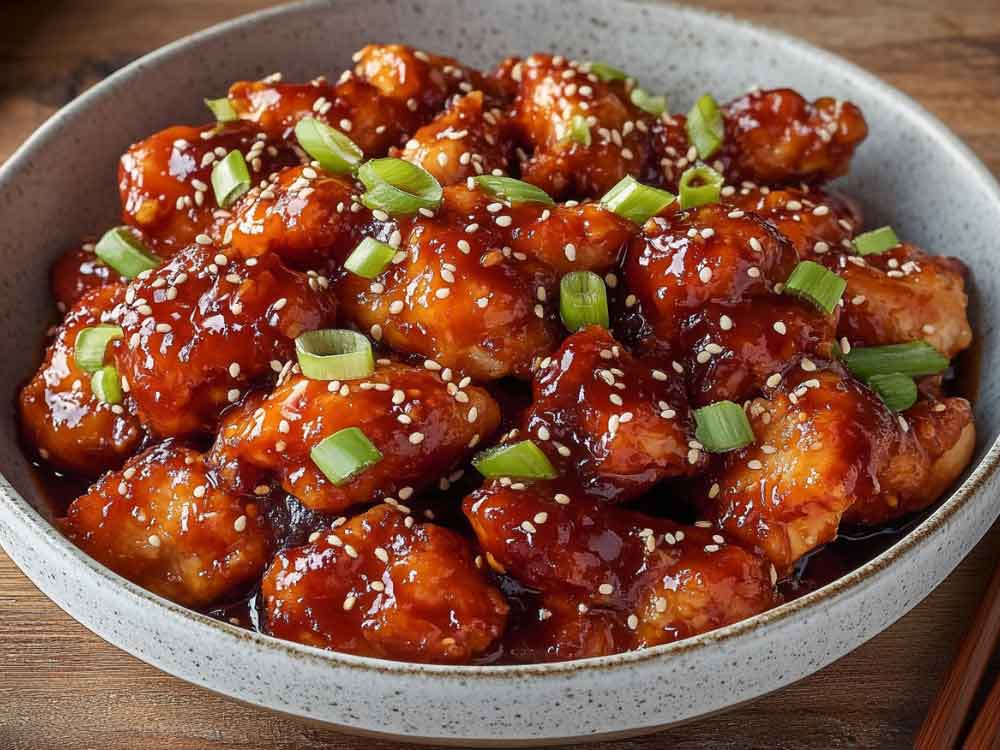
Serving and Decoration
Serve your Spicy Korean Chicken hot and fresh. Arrange the chicken on a platter, garnished with extra spring onions and sesame seeds for a pop of color. Pair it with steamed rice, pickled vegetables, or a refreshing cucumber salad to balance the heat.
Variations for Spicy Korean Chicken
- Make It Spicier: Add more gochujang or sprinkle in extra chili flakes.
- Gluten-Free Option: Use gluten-free flour for the coating and tamari instead of soy sauce.
- Add Vegetables: Stir-fry some bell peppers and onions to toss in with the chicken.
- Try Air-Frying: For a healthier version, air-fry the chicken at 200°C (400°F) for 15-20 minutes.
Storing Spicy Korean Chicken
- Refrigerator: Store leftovers in an airtight container for up to 3 days.
- Freezer: Freeze the cooked chicken (without sauce) for up to 2 months. Reheat in the oven or air fryer, then toss in freshly made sauce.
Nutrition Information
| Nutrient | Amount Per Serving |
|---|---|
| Calories | 450 kcal |
| Protein | 28 g |
| Fat | 15 g |
| Carbohydrates | 50 g |
| Fiber | 2 g |
| Sugar | 18 g |
FAQs
Can I bake this chicken instead of frying?
Yes! Bake the coated chicken at 200°C (400°F) for 25-30 minutes, flipping halfway through.
What is gochujang, and where can I find it?
Gochujang is a Korean chili paste with a sweet, spicy, and savory flavor. It’s available at most Asian grocery stores or online.
Can I use chicken thighs instead of breasts?
Absolutely! Chicken thighs are juicier and work just as well in this recipe.
